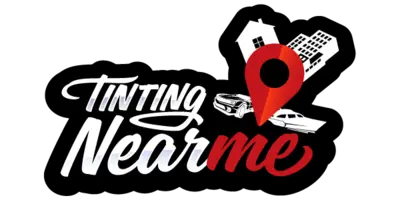2024 Nebraska Legal Tint Laws Explained
Imagine you’re cruising down I-80 in your newly tinted SUV, enjoying the Nebraska sunset without squinting, when suddenly those dreaded red and blue lights flash in your rearview mirror. The officer informs you that your window tint is too dark, violating the new 2024 Nebraska Legal Tint Laws. You’re left scratching your head, wondering how you could’ve avoided this predicament. In order to equip yourself with the necessary knowledge to navigate these regulations, let’s take a detailed look into understanding these laws: their specifics, additional restrictions, exemptions, and potential penalties for non-compliance.
The information on tintlaws.com isn’t legal advice; consider it a starting point. Always verify with local and state authorities, as the final decision rests with you. We are not lawyers. For specific legal guidance, we can refer you to legal experts. Remember, knowledge of both state and local laws is essential, and even law enforcement might not be fully updated. We aim for accuracy but advise double-checking for the latest regulations.
Key Takeaways
Key Takeaways
Key Takeaways
- Non-reflective tint is allowed above the AS-1 line on windshields for all vehicles.
- Front side windows of cars and SUVs/vans must allow more than 35% of light in.
- Back side windows must allow more than 20% of light in.
- Front side windows of vans, SUVs, and trucks must have tint no darker than 24% VLT, while rear windows can have tint as dark as 20% VLT.
Understanding Nebraska Tint Regulations
In Nebraska, it’s vital to understand that the law allows non-reflective tint above the AS-1 line on windshields for all vehicles, but there are specific light allowance percentages for front and back side windows depending on the type of vehicle. This understanding of Nebraska tint regulations can play a crucial role in ensuring you comply with the law and avoid any legal complications.
When you’re considering window tinting for your car, keep in mind the Nebraska tint laws for front side windows. Both cars and SUVs or vans must have a tint that allows more than 35% of light in. This is called the (VLT%) Visible Light Transmission. So, if you’re looking to add a tint to your front side windows, ensure it’s within this legal limit.
The rules are slightly different for back side windows and rear windows. For these windows, the tint is allowed to be somewhat darker. The Nebraska window tint laws state that your car window tint must allow more than 20% of light in. This gives you a bit more room for privacy while maintaining adequate visibility for safety.
For vans, SUVs, and trucks, the Nebraska law allows front side windows with tint no darker than 24% VLT. So, remember to factor this TINT PERCENTAGE in your decision when tinting these types of vehicles.
Lastly, Nebraska prohibits certain colors for window tints. Red, amber, and yellow tints on windshields are not acceptable. As you navigate through understanding Nebraska tint regulations, remember this rule to stay legal.
Specific Window Tint Rules
Let’s dive into the specific window tint rules you’ll need to follow in Nebraska to ensure your vehicle stays within the legal limits. Understanding these rules is crucial for maintaining your car’s compliance with the Nebraska legal tint laws.
Here’s a breakdown of the rules:
- Side Windows: For both cars and SUVs/vans, your front side windows must allow more than 35% of light in. The law is a little different for your back side windows—they must let in more than 20% of light.
- Non-Reflective Tint: Nebraska window tint law allows non-reflective tint down to the AS-1 line. The recommended thickness is around 5 inches. Keep in mind that most vehicles come with factory tint on the windshield.
- Rear Windows: In terms of your car’s rear windows, the law is more lenient. The tint allowed can be as dark as 20% Visible Light Transmission (VLT).
- Medical Exemptions: The law allows medical exemptions for certain conditions that require more or less tint. Always consult with a professional to understand if your condition qualifies.
Remember, the rules on tint reflectivity are also important. Your front and back side windows should not be more than 35% reflective. Moreover, red, amber, and yellow tints are not permitted on windshields.
Understanding and adhering to these specific window tint rules is essential for navigating the Nebraska legal tint laws. Stay informed and make sure to adjust your car windows accordingly by 2024.
Additional Tinting Restrictions
Beyond the basic rules, Nebraska’s tint laws impose additional restrictions on larger vehicles like vans, SUVs, and trucks, limiting the front side windows to no darker than 24% VLT. This specific law, found in section 71 of Nebraska’s legislature, ensures that visibility is not unduly compromised for drivers of larger vehicles.
Reflective tint, while allowed, should not exceed 35% reflectivity. This is an important consideration if you’re thinking of applying film to your car windows. Be aware that darker privacy tinting, particularly on larger vehicles, might attract unwanted attention from law enforcement.
Regarding the windshield, Nebraska laws state that any tint must be non-reflective and placed above the AS-1 line, regardless of the type of vehicle. While there are no specific requirements for darkness or reflectivity, it’s essential to ensure that visibility remains clear.
Adding a legal window film can indeed enhance privacy and reduce heat inside your vehicle. However, it’s crucial to remember that the law’s primary focus is safety. Any tinting applied to your side windows or windshield should not impede your view or the visibility of your vehicle to others on the road.
Certificates and stickers are required to justify any exceptions to these rules. Nebraska also allows for medical exemptions to the tinting laws. If you have a specific medical condition that necessitates darker window tinting, it’s advisable to consult with a legal expert to understand the process for obtaining such an exemption.
Legal Exceptions and Exemptions
While navigating Nebraska’s tinting laws, it’s crucial to note that vehicles with medical waivers may be exempt from some of these regulations. Current Nebraska rules allow for medical exemptions, which means if you have a valid health condition that requires you to have tinted windows, you could be granted an exemption for window tint.
However, it’s important to understand the Nebraska rules to identify legal tinting, even if you have a medical waiver. Here’s a brief rundown:
- Tint Inspections: Unlike some states, tint inspections are not required by Nebraska law. You won’t have to worry about annual checks, but law enforcement can still issue citations if they believe your window film violates restrictions on tint.
- Special Permits: Nebraska doesn’t offer special permits for darker tint. Even with a medical exemption, you’re not permitted to have tint that goes beyond the legal limit set by the state.
- Citation Compliance: If you do receive a citation, address it promptly. Ignoring or delaying response to a citation can lead to additional penalties.
- Tint Colors: Regardless of any exemptions, red, amber, and yellow tints are not permitted on windshields in Nebraska.
Penalties for Non-Compliance
Now that we’ve covered the legal exceptions and exemptions, it’s important for you to understand what could happen if you don’t comply with Nebraska’s tint laws. Non-compliance can result in various penalties that could be inconvenient and costly for you.
If you’re found to be non-compliant with the 2024 Nebraska legal tint laws explained, law enforcement may issue you a citation. This is a formal notice that you’re violating the state law, particularly if your tint is suspected to be too dark. Remember that the tint is measured in terms of visibility. Side windows, for instance, must allow a certain percentage of light in. If your window tint film is darker than what the law allows, you could be in trouble.
But it doesn’t end there. One of the penalties for non-compliance is that you might be required to remove the illegal tint from your windows. This means you’ll need to bear the cost and inconvenience of having the tint film removed and potentially replaced with a legal one.
Even if you have a medical waiver, you’re not exempt from the tinting laws. You still need to ensure your tint aligns with the legal standards, or you could face the same penalties.
Lastly, it’s crucial for you to act promptly if you receive a citation. Delaying compliance could lead to additional penalties, making the situation even more challenging for you. So, follow the law, and ensure your tint is within the legal limits to avoid these issues.

How to Get Medical Exemption For Window Tint in Nebraska
Discover MyEyeRx.net, a company that streamlines the process of obtaining a medical exemption for window tint online. Explore their services to easily transform your window tint from non-compliant to legally approved!
Because of the differences in each of the 50 states, we’ve crafted distinct guides for securing window tint medical exemptions across all 50 states.

Toriano (Tory) Dewberry
Become one of the many satisfied clients Toriano has assisted in obtaining a medical exemption without stepping out of their homes. Click the button below to begin and discover if you're eligible for a medical exemption.

Toriano (Tory) Dewberry
Become one of the many satisfied clients Toriano has assisted in obtaining a medical exemption without stepping out of their homes. Click the button below to begin and discover if you're eligible for a medical exemption.
Frequently Asked Questions (FAQ'S)
What Is the Darkest Legal Tint in Nebraska?
In Nebraska, you’re allowed a maximum tint of 35% VLT on your front side windows. Your back side and rear windows can go darker, to 20% VLT. For larger vehicles, front side windows can be tinted to 24% VLT. Remember, tint installation must be done professionally for durability and UV protection. Tint types, pricing, and benefits vary. Always consider tint regulations and maintenance, and explore tint alternatives if necessary.
Can I Have 5 Percent Tint in Omaha?
You can’t have 5 percent tint in Omaha due to strict regulations. Law enforcement may penalize you for breaking these rules. Exceptions exist, but they’re rare. Tint measurements above 20% on back windows and 35% on front side windows are required for safety. Despite tint benefits, legal considerations take precedence. Ensure your tint installation uses appropriate materials to avoid penalties. Always adhere to Omaha’s laws for a hassle-free ride.
What Does 35 Reflective Tint Look Like?
Imagine peering through a pair of light sunglasses; that’s what 35% reflective tint looks like. It lessens glare, enhancing your car’s aesthetic appeal yet still maintaining visibility for safety. Installation doesn’t break the bank, but remember to factor in maintenance and tint longevity. Different tint manufacturers offer various levels of reflectivity impact, so do your research. Also, consider the environmental effects; this tint reduces heat, providing a cooler, more comfortable ride.
What Is the Darkest Tint Allowed?
In Nebraska, you’re legally allowed to have your front side windows tinted to 35% VLT. For your back side and rear windows, you can go as dark as 20% VLT. However, you must be mindful of visibility concerns, law enforcement, and safety measures. Improper tint installation or tint variations that don’t comply with the law can lead to legal consequences. Regular tint maintenance is essential for vehicle aesthetics and compliance with tint regulations.

Tint Laws Team
Ensuring your tint is not just about style, but legality and safety.
Let us guide you through the maze of state regulations to legal clarity.

Conclusion
So, don’t risk getting slapped with a hefty fine that could dwarf the cost of a round-trip ticket to Mars! Stay on the sunny side of the law by ensuring your vehicle’s tint complies with Nebraska’s specifications. Remember, your front side windows must allow 35% light in, and your back side and rear windows, 20%. After all, window tints aren’t just about privacy and UV protection – they’re about keeping you, and your wallet, safe and sound.
Looking to find a Reputable Window Tint Company In Nebraska?
Checkout Tintingnearme.com to Find A Local Tint Shop
After learning about window tint laws, the next step is to find a trusted local window tinting shop. Our directory at Tinting Near Me offers a selection of reputable shops knowledgeable in both quality tinting and legal standards, including medical exemptions.
Choose a shop from our list for expert service that meets legal requirements and enhances your vehicle’s compliance and protection.



